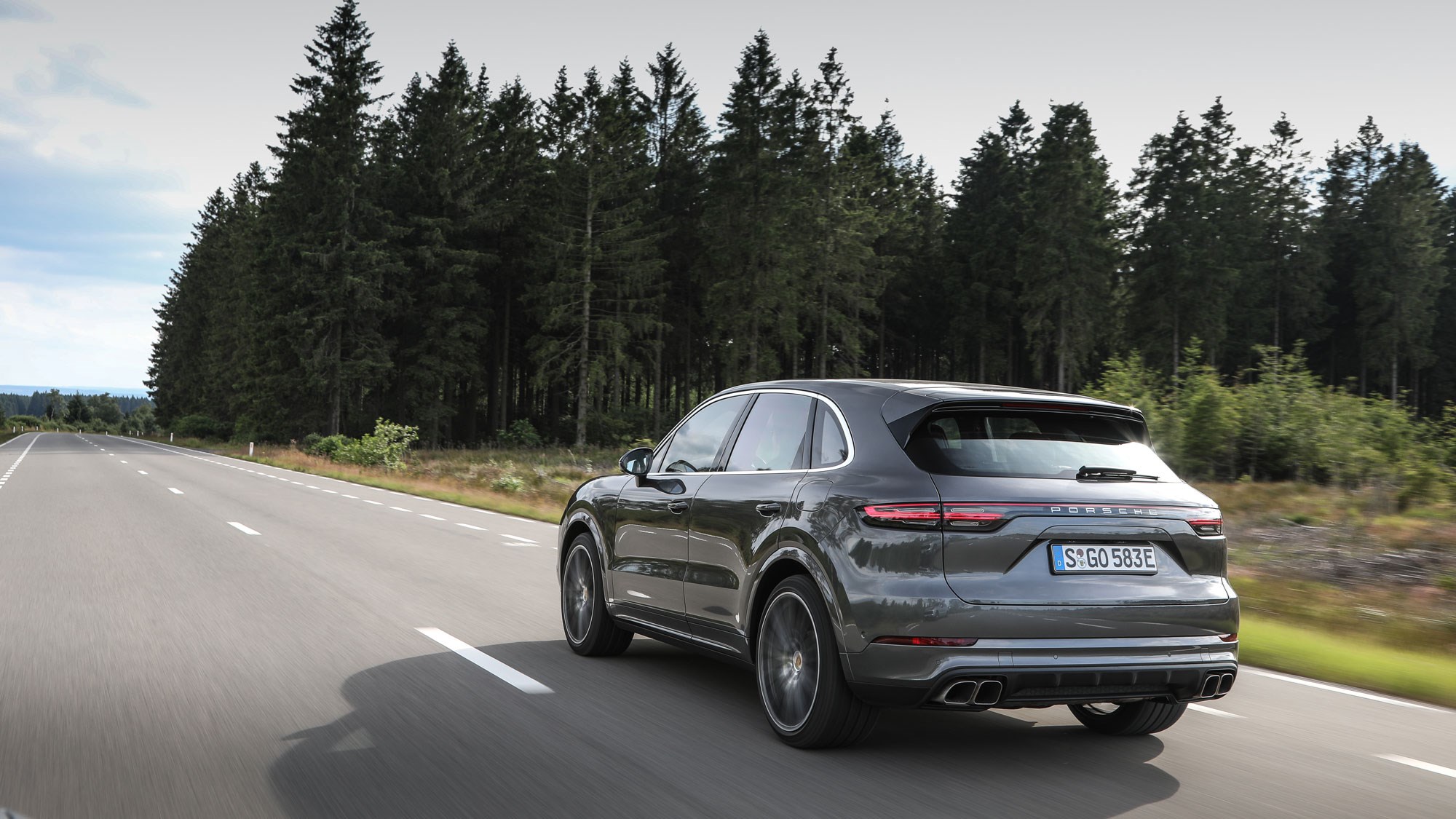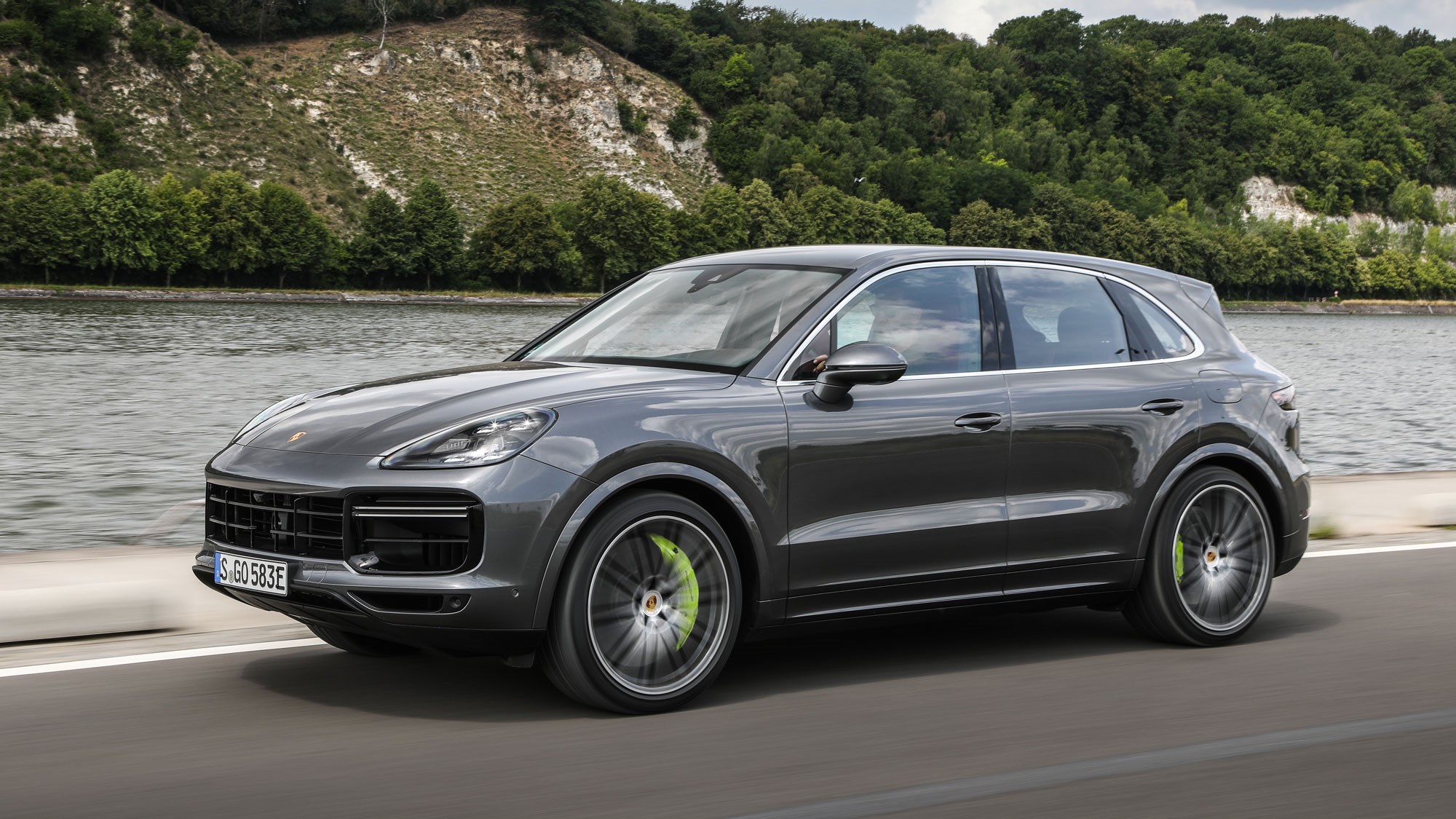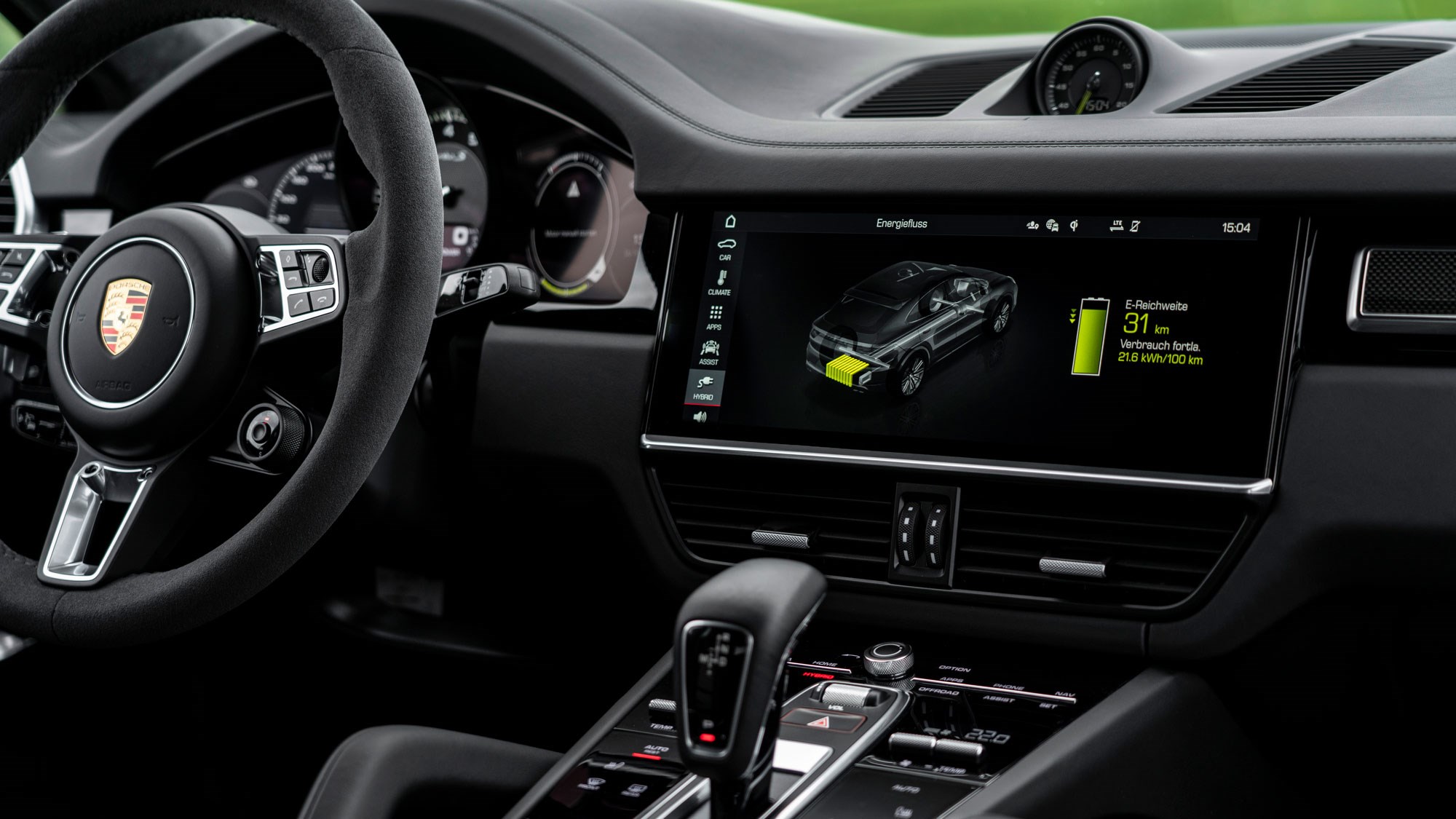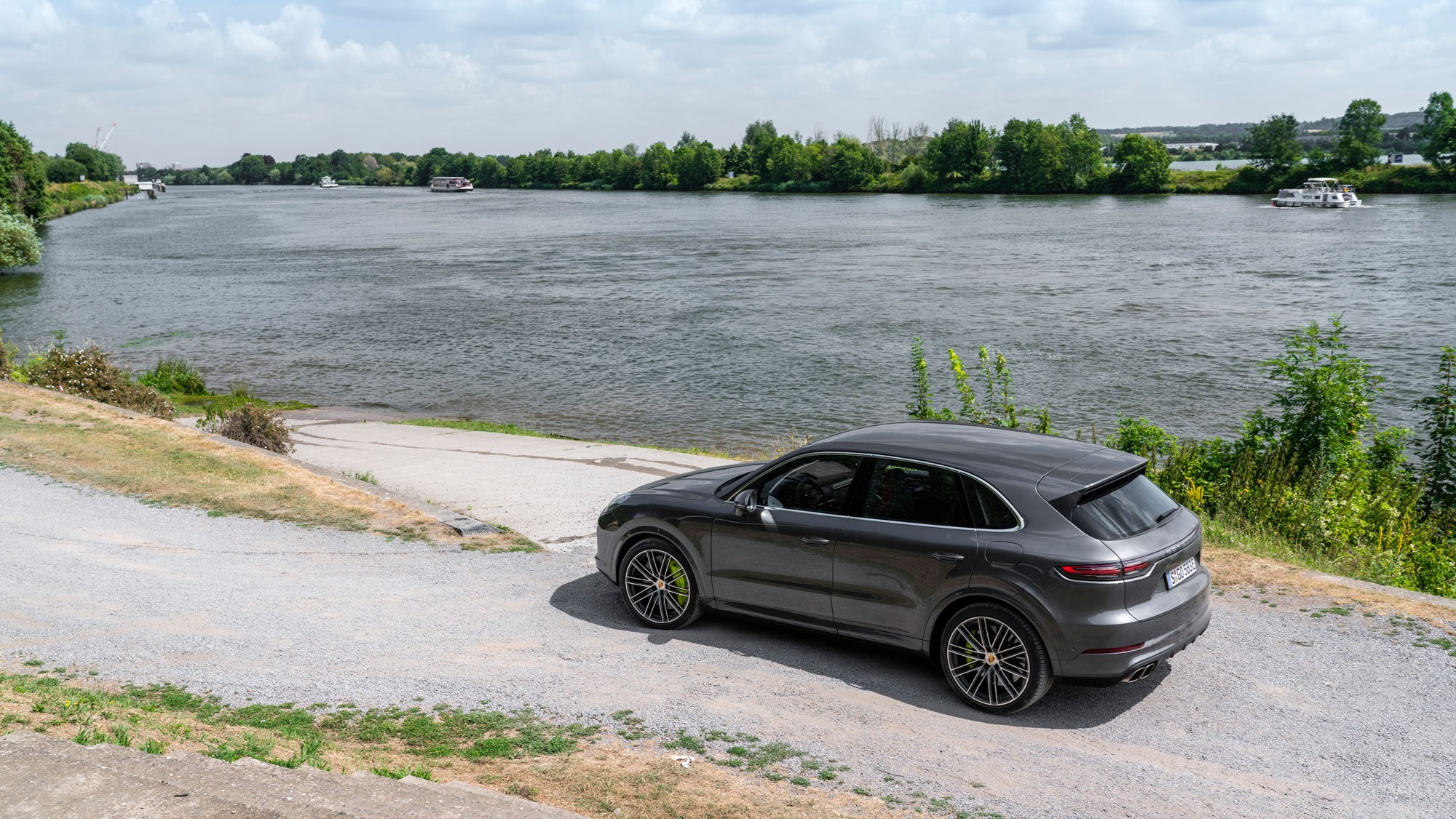► New Cayenne range-topper is a fierce plug-in V8
► Ludicrous performance, some EV-only range and a fraction less guilt
► £123,349, 670bhp, 3.8sec 0-62mph, 183mph
The last thing the Cayenne needed was to get more expensive and heavier but, perhaps figuring that the big SUV buying demographic is pretty red-meat-and-two-veg in its tastes, that’s exactly what’s happened with the creation of this new hybrid powered flagship, the Turbo S E-Hybrid.
Using a similar powertrain layout and package as the existing, V6-engined E-Hybrid, the Turbo S swaps that six for a twin-turbo V8, which in turn charges and draws power from a far juicier lithium-ion cell (housed under the boot floor and rear seats). The V8 is good for 542bhp, the battery 14.1kWh and the e-motor 128bhp, giving an unholy combined output of 670bhp and 664lb ft. That’s more power than a McLaren F1 and more torque than a Dodge Hellcat, all in a hybrid SUV.

Throw social responsibility to the wind and the Turbo S E-Hybrid will fire to 62mph in 3.8sec and storm on to 183mph, eclipsing even the 4.1sec, 177mph sledgehammer Cayenne Turbo. Greenpeace!
A rocketship, then?
Yes and no. Pull the pin on the Turbo S E-Hybrid’s combined might and the sense of serious forces being unleashed is tangible, though the Cayenne breaks no sweat – traction is absolute, and roll-on acceleration muscular and heavyweight. The two ‘engines’ – one electric, one very much internal combustion – are also silkily integrated. But 2490kg isn’t an insignificant kerb weight, and it robs this new Cayenne (the same powertrain’s also available in the new Cayenne Coupe) of a truly scintillating turn of speed.
Slowing the rig back down again doesn’t take long, thanks to massively capable mechanical brakes and the Cayenne’s confidence-swelling poise and stability. But the brake pedal – a challenging element to get right in any car that uses regenerative charging – is infuriating inconsistent, which in turn asks for more concentration to keep progress smooth and serene. It’s a flaw that feels decidedly un-Porsche, and hangs a question mark over its already tenuous claim that this new plug-in flagship draws directly on the 919 hybrid racer… It’s hard to imagine inconsistent brake pedal feel being tolerated by Porsche’s Le Mans pilots…

And in corners?
Grip and composure to spare, thanks to the now familiar performance SUV combination of a frankly vast rubber footprint, air suspension and 48-volt anti-roll control. Together with torque vectoring, the Cayenne’s brain uses the variable roll system to not only optimise the ride/handling balance on the fly but to also tune the car’s handling balance to each drive mode. The upshot is a pleasingly eager, agile and understeer-immune Cayenne in Sport Plus – no mean feat given the less than ideal physics of the car’s fundamental size, weight and layout.
But the ride’s not entirely convincing. Porsche has a handle on air suspension generally, and the Cayenne gets the broad-stroke stuff – dealing with meaty bumps, not collapsing into pitch, roll or squat when you’re in a hurry/clumsy – absolutely right. But scarred tarmac and rough surfaces bother the car like they really shouldn’t, particularly here, where the ratio of sprung to unsprung mass is so obviously in the Turbo S E-Hybrid’s favour.
Sounds like a mixed bag
Don’t get me wrong, there’s much to like here. Aesthetically, the Cayenne’s matured nicely with each generation and, in the right spec, the new Cayenne Coupe is genuinely handsome. It’s just as attractive inside, too, with great seats, the now familiar (from the Panamera and new 992-generation 911) big touchscreen interface and an air of serene, stylish and sturdy craftsmanship that’d help salve even the most panicked post-purchase jitters. Snug behind the gorgeous steering wheel you feel pretty damn good, whether you’re quietly shrinking autobahn distances at serious three-figure speeds, hurrying through empty roundabouts with the thing gently squiffy or politely picking your way through town on EV power.

Practically, the sacrifices you make to the hybrid system aren’t huge. Price and weight go north, as discussed, but the boot’s only marginally smaller than the Cayenne Turbo’s (645 litres and 1605 litres with the rear seats folded, versus the Turbo’s 745 and 1680). You’ll know whether a hybrid suits you or not – nearly 70% of European Cayenne sales are hybrid – and the new Turbo S E-Hybrid does at least open up more choice. Now, far from feeling under-gunned whenever the Turbo flashes through your thoughts (or past your side window), you can now hold your head up high in a hybrid Cayenne. And give chase.
Porsche Cayenne Turbo S E-Hybrid: Verdict
Let’s take this bit by bit. The Porsche V8 is a corker. This will come as news to no one. Musical, grunty and convincing in its heave when you need it, this is an engine to have and to hold (and to jealously guard from others).
And the hybrid element? Use the plug-in as intended and the e-motor serves to both bolster the petrol engine’s performance and sugar the pill of its conspicuous consumption, at least on paper.

In reality, even starting out with a fully charged battery, we managed 27mpg over the course of an hour and 20 minutes on motorways and country roads. Sure, you could improve on that – but if that’s the objective, why the V8 in the first place? That said, EV-only mode is refined, enjoyable and powerful enough to feel genuinely usable, with an improbable 84mph top speed. On regular trans-urban missions it’d work well, as it would for short, regular commutes. But £25k in your back pocket and the lighter, barely any slower Turbo on your drive? Tough to ignore.